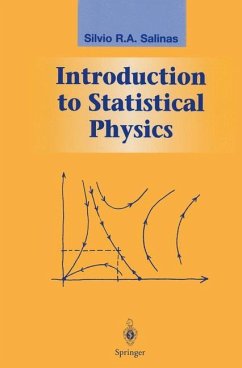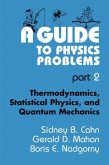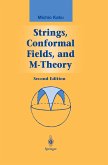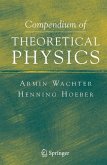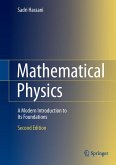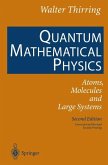Intended for beginning graduate students or advanced undergraduates, this text covers the statistical basis of equilibrium thermodynamics, both classical and quantum, including examples from solid-state physics. It also treats some topics of more recent interest such as phase transitions and non-equilibrium phenomena. The approach to equilibrium statistical mechanics is based on the Gibbs microcanonical ensemble. The presentation introduces modern ideas, such as the thermodynamic limit and the equivalence of ensembles, and uses simple models (ideal gas, Einstein solid, ideal paramagnet) to make the mathematical ideas clear. Frequently used mathematical methods are reviewed in an appendix. The book begins with a review of statistical methods and classical thermodynamics, making it suitable for students from a variety of backgrounds. Classical thermodynamics is treated in the in the context of the classical ideal gas and the canonical and grand canonical ensembles. The discussion of quantum statistical mechanics includes Bose and Fermi gases. the Bose-Einstein condensation, phonons and magnons. Phase transitions are first treated classically (using the van der Waals and Curie-Weiss phenomenological models as examples), and then quantum mechanically (the Ising model, scaling theory and renormalization). The book concludes with two chapters on nonequilibrium phenomena: one using Boltzmann's approach, the other based on stochastic models. Exercises at the end of each chapter are an integral part of the course, clarifying and extending topics discussed in the text. Hints and solutions can be found on the author's web site.
Hinweis: Dieser Artikel kann nur an eine deutsche Lieferadresse ausgeliefert werden.
Hinweis: Dieser Artikel kann nur an eine deutsche Lieferadresse ausgeliefert werden.
From the reviews:
It is written in an informal, physics type style, but presents precise and well explained arguments. The list of references is well chosen and contains comments which facilitate further readings.
--Zentralblatt Math
"This book is addressed to physics students at the senior undergraduate or beginning graduate level. As such, it emphasizes physical intuition and central physical arguments over detailed mathematical justification. ... Physics students will enjoy the clarity and calculated simplicity of its presentation, while acquiring a broad knowledge of the subject. But, because of its careful selection of conceptual issues and its unassuming style, the book can also be a useful reference to students in other disciplines, including mathematics ... ." (Roberto Fernández, Mathematical Reviews, Issue 2003 e)
"Statistical physics attempts to explain ... laws by considering the large number of constituent particles from a statistical point of view. This is also the point of view of this textbook ... . It is written in an informal, physics type style, but presents precise and well explained arguments. It supports intuition more than formalism, and discusses a large number of relevant examples and models. ... The list of references is well chosen and contains comments which facilitate further readings." (Michael Baake, Zentralblatt MATH, Vol. 983, 2002)
It is written in an informal, physics type style, but presents precise and well explained arguments. The list of references is well chosen and contains comments which facilitate further readings.
--Zentralblatt Math
"This book is addressed to physics students at the senior undergraduate or beginning graduate level. As such, it emphasizes physical intuition and central physical arguments over detailed mathematical justification. ... Physics students will enjoy the clarity and calculated simplicity of its presentation, while acquiring a broad knowledge of the subject. But, because of its careful selection of conceptual issues and its unassuming style, the book can also be a useful reference to students in other disciplines, including mathematics ... ." (Roberto Fernández, Mathematical Reviews, Issue 2003 e)
"Statistical physics attempts to explain ... laws by considering the large number of constituent particles from a statistical point of view. This is also the point of view of this textbook ... . It is written in an informal, physics type style, but presents precise and well explained arguments. It supports intuition more than formalism, and discusses a large number of relevant examples and models. ... The list of references is well chosen and contains comments which facilitate further readings." (Michael Baake, Zentralblatt MATH, Vol. 983, 2002)

